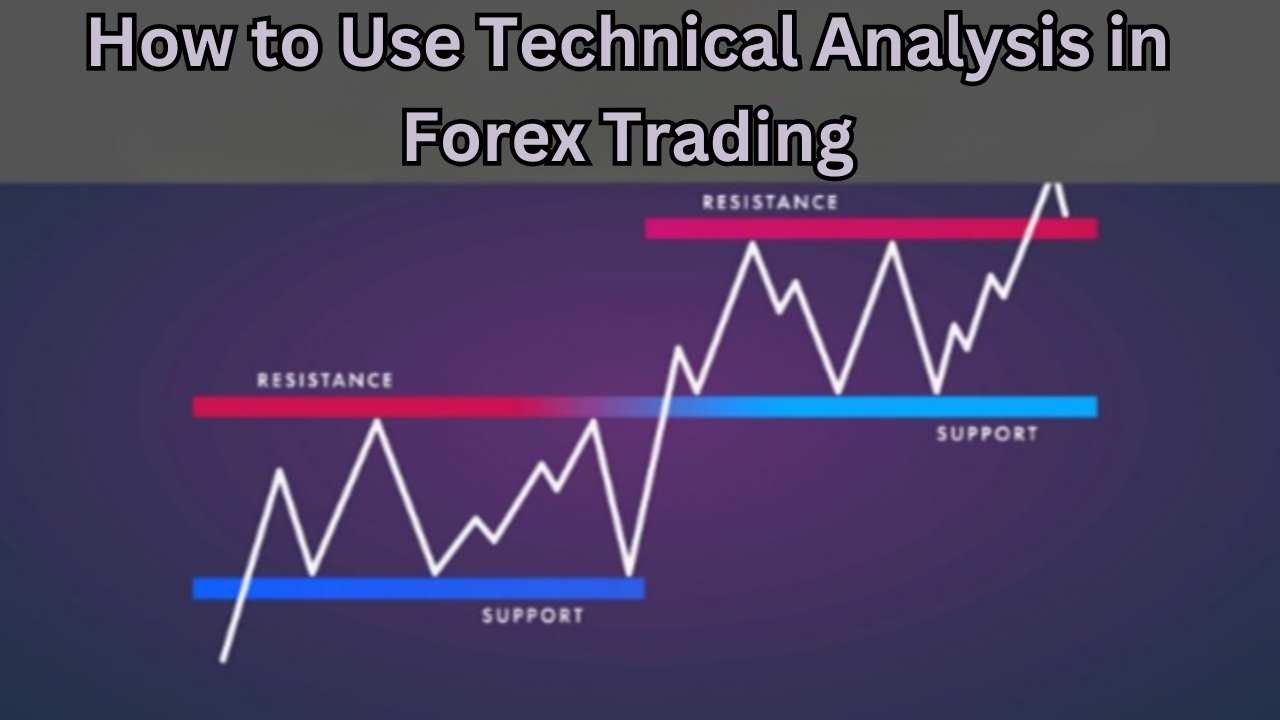A key tool used by forex traders to make well-informed trading decisions based on past price data chart patterns and indicators is technical analysis. Examining market trends and price changes it assists traders in determining possible entry and exit points. A trader’s ability to confidently navigate the forex market can be greatly enhanced by comprehending and using technical analysis.
Understanding the Basics of Technical Analysis:
The foundation of technical analysis is the idea that market psychology causes past price movements to frequently recur. Investors think that historical price trends can be used to forecast future movements. In contrast to fundamental analysis which takes into account political and economic variables technical analysis only looks at price charts and patterns. Traders try to predict price trends and seize lucrative opportunities by examining historical data.
Using levels of support and resistance is an essential part of technical analysis. Whereas resistance is a price level where selling pressure stops further increases support is a level where demand is sufficiently strong to stop further declines. Knowing these levels aids traders in making calculated choices about when to enter or exit trades.
Utilizing Charts and Patterns in Forex Trading:
The main tool in technical analysis is charts which show price movements over a range of time periods. Bar charts candlestick charts and line charts are the three most popular chart types. The ability of candlestick charts to offer comprehensive details on price movements including open high low and close prices makes them the most widely used of these.
An important factor in forecasting price movements is chart patterns. Head and shoulders triangles flags and double tops and bottoms are a few of the most popular designs. By identifying possible trend continuations or reversals these patterns help traders plan their trades. Traders can better manage risk and predict future market movements by recognizing these formations.
Applying Technical Indicators for Better Accuracy:
Technical indicators are derived from price and volume data and are mathematically calculated. They aid traders in recognizing possible reversal point’s trends momentum and volatility. Moving averages the Relative Strength Index (RSI) Bollinger Bands and the Moving Average Convergence Divergence (MACD) are a few of the most popular technical indicators in forex trading.
Moving averages smooth out price fluctuations, making it easier to identify trends. The 50-day and 200-day moving averages are commonly used by traders to determine long-term trends. When a short-term moving average crosses above a long-term moving average, it signals a potential uptrend, while a downward cross suggests a downtrend.
By comparing recent gains and losses the RSI calculates a trend strength. A reading above 70 suggests that a currency pair might be overbought and could be about to reverse lower. On the other hand, a reading below 30 indicates that a pair might be oversold and could be about to reverse upward.
The Bollinger Bands plot two standard deviation lines around a moving average to assist traders in determining when a market is overbought or oversold. The price may be overbought if it moves toward the upper band and it may be oversold if it moves toward the lower band.
One trend-following indicator that traders can use to spot momentum shifts is the MACD. It is made up of a histogram that displays the difference between two moving averages. A bullish trend is indicated when the MACD line crosses above the signal line a bearish trend is suggested when the line crosses below.
Understanding Market Trends and Price Action:
In forex trading market trends are very important. A currency pair’s general direction of movement is referred to as its trend. Up down and sideways trends are the three categories into which trends can be divided. The likelihood of success is increased by recognizing the trend and trading in its direction.
Price action analysis involves studying historical price movements to identify patterns and trends. It is often used in combination with candlestick patterns to make trading decisions. For example, bullish engulfing patterns indicate potential upward reversals, while bearish engulfing patterns suggest possible downward reversals.
The identification of critical levels such as round numbers and psychological levels is another essential idea in price action trading. To choose their trading strategy traders frequently watch how the price responds at these levels.
Developing a Trading Strategy with Technical Analysis:
To succeed in forex trading one must have a clear trading strategy. Accuracy can be increased and the possibility of false signals decreased by combining several technical analysis tools. To enter and exit trades based on indicators patterns and market conditions traders should set clear guidelines.
Another crucial element of a trading strategy is risk management. Establishing take-profit and stop-loss levels aids traders in locking in profits and safeguarding their capital. It is important to carefully evaluate risk-reward ratios to make sure that possible gains exceed potential losses. Traders should also refrain from overtrading and exercise self-control to adhere to their plan.
Conclusion:
Technical analysis is a powerful tool for forex traders seeking to make informed decisions based on historical price data, chart patterns, and indicators. By understanding support and resistance levels, utilizing charts and patterns, applying technical indicators, and recognizing market trends, traders can enhance their ability to predict price movements and execute successful trades. Developing a solid trading strategy that incorporates technical analysis and risk management principles is essential for long-term success in the forex market. With consistent practice and continuous learning, traders can refine their skills and improve their chances of profitability in forex trading.
